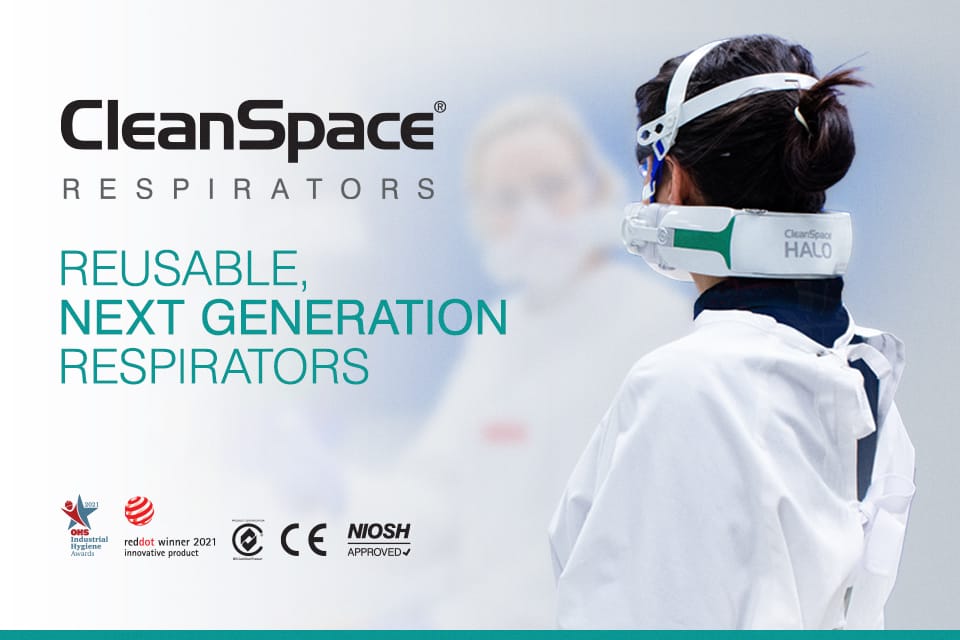Immediate action to shift away from single use PPE to reusable solutions in the healthcare setting is needed urgently
PRESS RELEASE
Global respiratory protection specialist, CleanSpace Technology, stands firm alongside the World Health Organization (WHO) in the call for reform on PPE procurement. With staggering figures newly released on the amount of consumable waste being produced due to COVID-19, there is an immediate need to shift away from single use PPE to sustainable solutions. Today’s technology enables advanced reusable solutions for hospitals, which deliver the much needed long-term cost savings and high assured protection for healthcare workers.
Released this month, the WHO Global analysis of health care waste in the context of COVID-19: status, impacts and recommendations report estimates 87,000 tonnes of PPE has been procured from March 2020-November 2021 — most of which is expected to have ended up as waste. The report references recent US study results that found if every medical worker used a reusable respirator mask instead of a disposable respirator mask, for all patients encountered during the first 6 months of the pandemic, US$ 4.9 billion would be saved and the waste volume would be reduced from 84 million kilograms to 15 million kilograms.[1]
The WHO report notes a behaviour change to reusable solutions requires dedicated leadership, and focused effort – starting at the global level from multilateral institutions who advise on use and procurement of PPE such as WHO, UNICEF, the Global Fund, Gavi and the World Bank. CleanSpace welcomes this report as a huge and positive step-change in the PPE conversation. Along with the environmental issues, relying on low-performing single use masks has created massive health and social problems with high healthcare worker infection rates and consequent staff shortages.
Leadership and education on a global scale will advance our pandemic preparedness approach to respiratory protection. The new generation in Powered Air Purifying Respirators (PAPRs), successfully used throughout this pandemic, create the bridge to lead healthcare organisations and governments out of single-use masks strategies. Importantly, investment in reusable systems negate costly and inadequate stockpiling measures and stretch across routine and peak demand.
“Healthcare worker protection is paramount to a maintaining viable care networks – sustainable respirator solutions exist and are readily integrated in hospital workflows. Not only are PAPRs reusable, they are the gold standard for high-risk airborne contagion,” says CleanSpace Technology CEO Dr Alex Birrell.
“I welcome the opportunity to speak to policy makers on the benefits of a PAPR specifically designed for healthcare and for it to be considered in future WHO guidelines. In our home country, state governments responsible for the protection of the majority of the Australian healthcare workforce, have published guidelines for use and cleaning of TGA approved CleanSpace HALO,” said Dr Birrell.
“We are proud to partner with close to 1000 hospitals globally in their transition to reusable PAPR systems. They see remarkable benefits in staff confidence and comfort, and are secure in a best-in-class pandemic readiness plan,” said Dr Birrell.
WHO says putting in place the innovative solutions and recommendations from its report, now, will ensure responses to future climate and health emergencies promote and improve protect human and environmental health – leading to safer and more resilient communities.
“I implore all hospitals to join us in the revolution in respiratory protection. By making the change away from single use devices and investing in reusable PAPRs, you improve your staff’s protection and reduce the immense burden of environmental waste. The time to change and act now,” she said.
[1]Chu J, Ghenand O, Collins J, Byrne J, Wentworth A, Chai PR, et al. Thinking green: modelling respirator reuse strategies to reduce cost and waste. BMJ Open. 2021;11(7):e048687. doi:10.1136/bmjopen-2021-048687.


Share